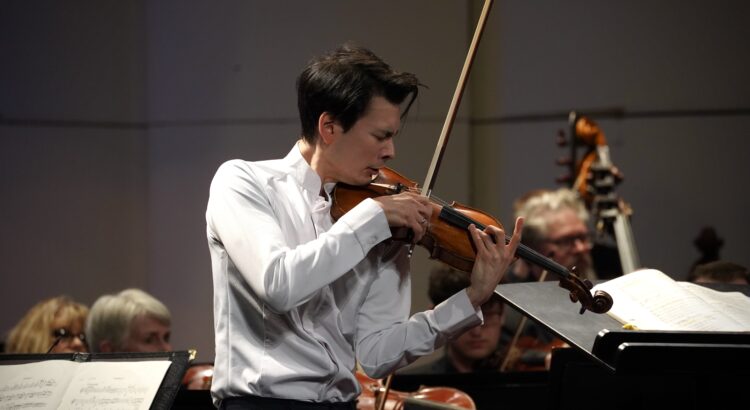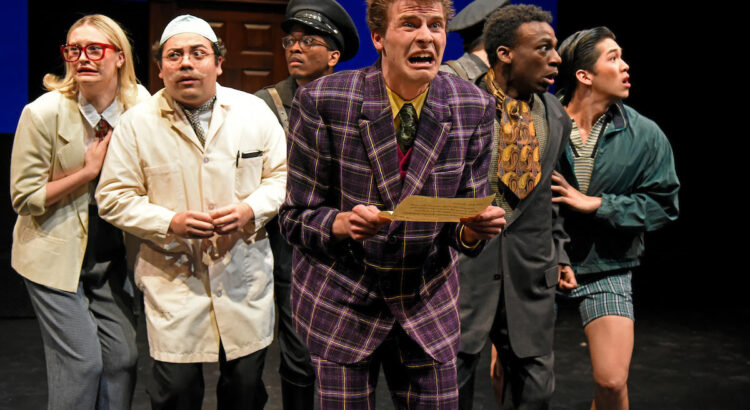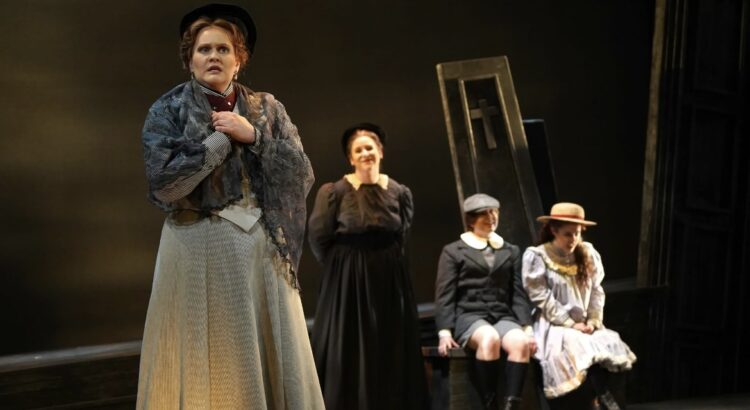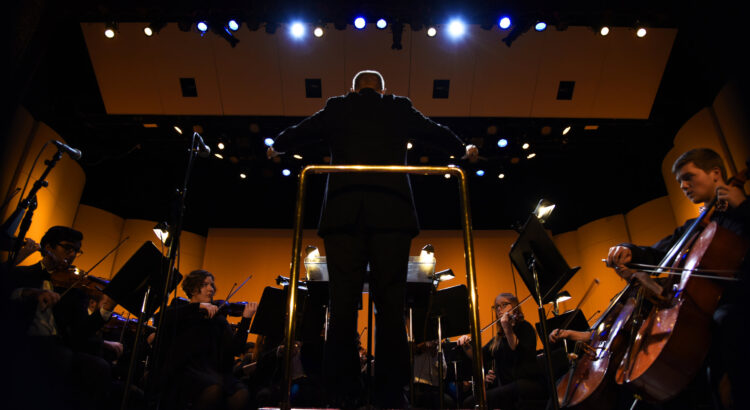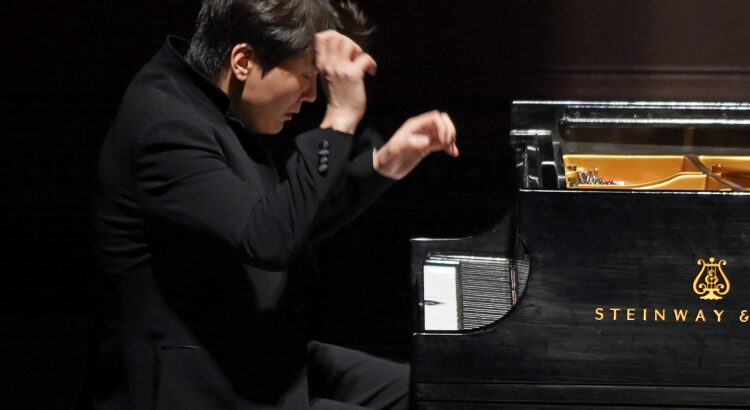Photos are provided by the Ann Arbor Symphony Orchestra
The Ann Arbor Symphony Orchestra’s February 2025 MainStage took place on Saturday, February 22, at 8 PM in the Michigan Theater, and alongside performing Montgomery’s Overture and Shostakovich’s 10th symphony, theyaccompanied violinist Stefan Jackiw who gave a phenomenally clean and vibrant performance of the Tchaikovsky Violin Concerto in D Major.
The Overture was the first piece in the program. It was my first time hearing Jessie Montgomery’s Overture, but it was incredibly enthralling. The piece opens with strikingly dissonant chords played by the entire orchestra that serves as a unique melodic line. These chords continue to be the main feature before the violins begin to take over with faster-moving notes that are then accompanied by changing chords in the brass instruments. Overall, it was a piece that can be largely described as a musical cacophony and served as a great introduction before moving on to the brighter melody of the violin concerto, which was the highlight of the night.
Similar to many other members of the audience, Tchaikovsky was the main reason why I wanted to attend this concert, as it’s one of the most famous violin concertos. The concerto’s grand melody truly makes the violin sing, which requires the soloist to have a high level of technique. The first movement, Allegro moderato, opens with a gentle melody from the orchestra that slowly builds up to the soloist’s entrance, which is low and soulful and evokes a sense of yearning that Jackiw’s strong vibrato captured perfectly. As the melody continues to ascend in pitch, its playful character grows and flourishes with runs before once again blending into a more soulful tune. I particularly admired Jackiw’s ability to bring out a full sound during each note no matter how short while using the full length of the bow, which requires accurate control of the bow’s weight with your hand.
The second movement, Canzonetta: Andante, similarly opens with a slower-moving melodic line from the orchestra. However, the soloist’s entrance remains somber and slow for the majority of the movement, a tasteful contrast to the preceding flightful first movement.
The opening of the third movement, the Finale: Allegro vivacissimo, is then startling. The orchestra is silent as the soloist’s part features strong, rich chords that Jackiw still manages to play with a clear and bright tone. He retained this brightness throughout the whole concerto, which was especially impressive during the last movement as it’s twelve minutes long, and it’s many character changes. The last section of the finale which consists of fierce spiccato was especially impressive, and spectacularly concluded the end of his performance.
Though I love Shostakovich, it was hard to imagine how the last piece of the program, Shostakovich’s Symphony No.10 in E minor, would make for a more satisfying conclusion to the night than the Tchaikovsky. The Moderato begins somberly slow, but the second movement, the Allegro, picks up and starts to set a frantic, anxious atmosphere that often comes with Shostakovich’s music. The character of the piece was fleshed out even more once the short, staccato notes opened the third movement, the Allegretto. Though the mood this piece evoked was much more different than the Tchaikovsky—much less cheerful—the ending of the finale was just as grand with fast notes from the violins and loud chords from the brass.
Overall, I enjoyed this concert. I am so happy I got to hear the Tchaikovsky Violin Concerto live, and Stefan Jackiw did an amazing job at bringing the piece to life. Though he’s a soloist I hadn’t heard of before I’ll keep an ear out for him moving forward.

